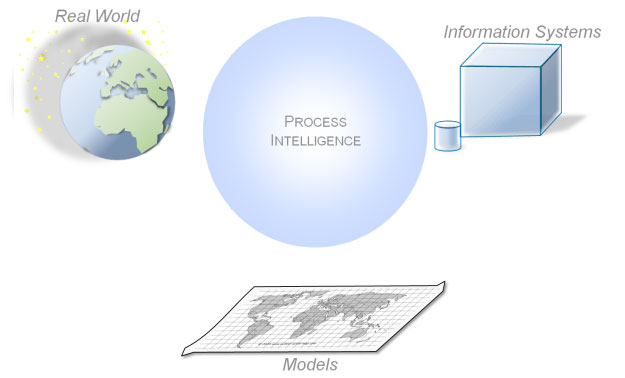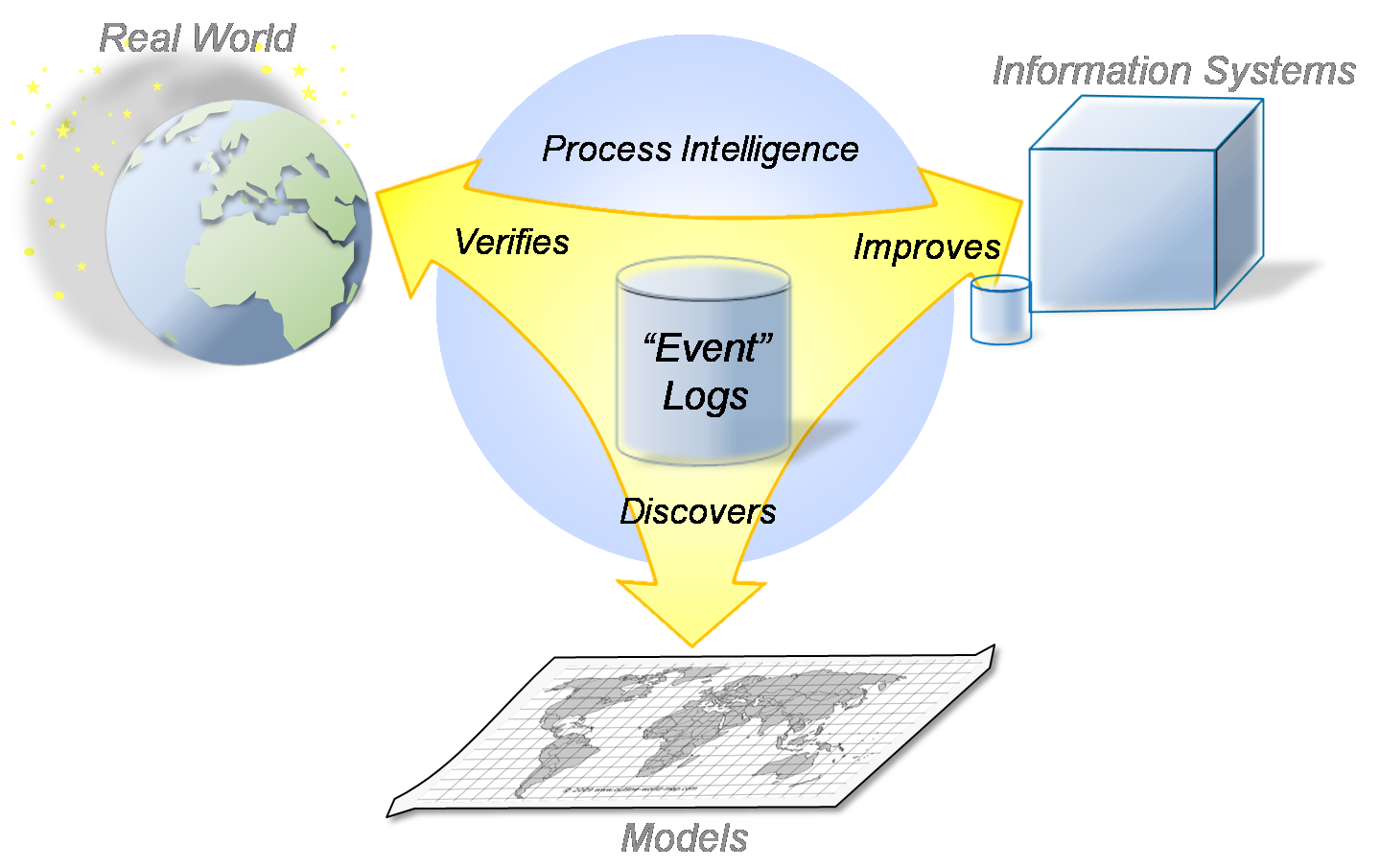
The (Business) Process Intelligence is a human-centered process that, starting from the event based and instance related information recorded by / into the information systems during their day-to-day operations, creates new, valid, potentially useful and ultimately understandable knowledge about the actual way of working of an organization.
Simply speaking, it is possible to think of the process intelligence as located in a central position among three entities:

The Real World. It represents not only the business, together with its duties and needs, but also all the involved stakeholders; in other words everybody who, somehow, contributes to define, influence and rule what the organization wants or is expected to perform.
The Models of reality. The numerous simplifications of the Real World necessarily produced in order to manage its complexity, for example: process diagrams, organization charts, models for simulation or forecasting, evaluation schemas and best-practice frameworks. They are approximations, that take into account only few specific aspects of interest, and their significance is limited to the specific objective they have been made for.
The Information Systems. Each group of elements, not only technological but also cultural, organized with the purpose of supporting, facilitating and controlling the entire sequence of activities, or value chain, of an organization.
The relationships amongst these entities create a circular sequence: the stakeholders express the Real World perceived needs and expected fulfillments by use of dedicated Models. These Models represent the specifications for the design and implementation of the Information Systems, which support and control activity and behaviour of the involved stakeholders. Who, in their turn, evaluate the performance, always against specific models, and, if necessary, intervene.

Unfortunately, this simple circle, that can be called virtuous, is often interwoven with a vicious one in which Models oversimplify the reality or have been built on wrong assumptions ; Information Systems, due to both technological limits or misunderstandings, disregard the models and, in addition, the Real World makes every effort for bypassing the rules implemented in the Information Systems.

The coexistence of conflicting behaviours, exemplified by the interwoven virtuous and vicious circles, creates a very confused situation, that explains why most of the organizations, even if spending time, energy and resources trying to understand and describe their own way of work, at last gather very limited insight into what is actually happening. In practice, a significant gap remains between what is perceived or supposed to happen, and what actually does happen. The vicious sequence leads inexorably to a worsening misalignment amongst the Business, its Models and Information Systems, that strongly impacts the decision making capability of the organization at all the levels and during the whole life-cycle phases of the business processes.
Primary scope of the PI is to provide a structured approach, that, breaking the undesired chain of reciprocal cause and effect, helps organizations investigating, discovering and controlling how they are actually working. In other words, it allows them to gather clear and sound actual knowledge about their business processes.
It is based on the large amount of data, generally recorded by information systems, during their day to day operation.
Different perspectives can be investigated according to which particular pieces of information are taken into account. Each perspective allows the gathering of quite different insight and depends, for its successful execution, on the availability of specific data:
- Process: a simple ordinate sequence of events, related to specific process instances and tasks, allows to concentrate on the aspects specifically related to the task flow: workflows can be mined and analyzed.
- Organization: additional information about who executes the events, allow the investigation of the organization: roles and relationship between them can be discovered and analyzed.
- Performance: once time-stamps are available for each event or task, detailed performance analysis can be performed.
- Rule: any other additional information (attribute related to the events, tasks, process instances or actors) allowes the identification of decision rules or other aspects.

Starting from these data stored into Information Systems, different objectives can be pursued according to the entity taken as the focus (or considered as reference):
- Discovery: concentrating on the model. The goal is obtaining detailed representations of the actual processes, organizational context and existing rules. It is also possible to evaluate them or to perform benchmarks.
- Verification: concentrating on the real world. Reference models (processes, organization, rules) exist and are used to check whether, and at what extent, the real world conforms to them.
- Improvement: concentrating on the information systems. It allows analyzing in detail the performance of the actual way of working for identifying weaknesses or improvement opportunities.



 Visita
Visita

